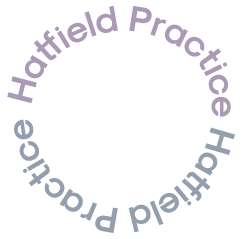Often patients ask who is better, who should I see? Should I see an osteopath or a Physiotherapist? And what’s the difference? In reality, there are probably many more similarities than differences between these two hands-on professions. Both treat muscle and joint pain using specific hands-on treatment techniques, often use electrotherapy and prescribe exercises. Osteopaths and Physiotherapists typically undertake training at university for three to five years. Training is intense and involves anatomy, physiology, pathology, health sciences and applied techniques. In general, Osteopathy typically has a more hands-on treatment approach. Osteopathic training educates the student’s eyes and hands to observe, diagnose, and examine the muscle and joint system to look for dysfunction. Physiotherapy treatment may include other treatment methods such as exercises, electrotherapy, and ultrasound. Osteopaths and Physiotherapists use clinical medical skills as part of the examination to be as safe as possible. Many disorders present as muscle and joint pain. It’s an essential part of examination and treatment to spot any underlying causes such as inflammatory arthritis, heart problems, diabetes and, where possible, spot anything nasty before treatment is undertaken.
Table of Contents
Osteopathy and Physiotherapy
Both approaches are very safe, and practitioners are highly qualified with their own unique skill sets. Osteopaths are typically well known for spinal and joint manipulation—physiotherapists who are well known for exercise rehabilitation. Osteopaths naturally will treat the body as a whole, whilst physiotherapists are more likely to treat the problematic area and be injury-specific. However, in private practice, Physiotherapy may well be very similar to Osteopathy. Physiotherapists are probably more likely to provide exercise rehabilitation as a part of treatment and are initially trained and work within the NHS framework and initially treat with a strong focus on exercise-based management. However, Many private physiotherapists may treat like Osteopaths, use manipulation and treat the body as a whole. They often have hundreds of hours of post-graduate training and develop their effective style and expertise.
Working alongside each other
Let’s imagine an experienced Physiotherapist and Osteopath working alongside each other in private practice. Both are very knowledgeable and are passionate about what they do. They have learned vast amounts along the way; In this case, there is an excellent possibility that treatments are applied, and their skills will not differ significantly. They would be able to treat any presenting musculoskeletal injury safely and effectively. In general, Physiotherapists are initially trained at providing NHS rehabilitation and Osteopaths at using hands-on techniques from the outset to treat painful conditions and chronic pains such as stiff muscles and spines. The fundamental difference between the two may be the philosophy behind the initial training, experience, personal development and the mindset that drives each practitioner to get people better. Despite their differences in philosophy and treatment, both aim to help your body work well again and relieve pain. It’s important to remember that no two practitioners will provide the same treatment. It’s worth researching and trying different people so that you find a practitioner who best suits you and your needs. Both professions complement each other well. Osteopaths provide specific hands-on treatment for pain relief and Physiotherapy, which is brilliant for rehabilitation after injuries or surgery.
Physiotherapy
Physiotherapy treatment typically involves direct hands-on therapy and exercises. The Physiotherapy will listen to you carefully and examine any sore areas. Treatment reduces pain levels by improving blood flow to the affected area, directly removing inflammation. A gentle or deep massage may help relax muscles and ease swollen joints sweeping inflammation away. Exercises provided will help to increase flexibility and strengthen the area.
When recovery progresses, treatment techniques tend to be deeper and focus directly on surrounding body parts to improve the primary cause of pain. If the patient is very sore and the body is inflamed, the treatment may include electrotherapy or acupuncture. These modalities reduce inflammation and relieve pain quickly without aggravating the situation further. In most cases, the Physiotherapist will provide specific exercises to strengthen the body and retrain weakened body parts after injury.
Physiotherapy provides pain relief.
Physiotherapy is clinically proven and can make an enormous difference in the quality of life after injury or surgery. Physiotherapy is also helpful for everyday mishaps, work or sports injuries. Physiotherapy can also help reduce the need for painkillers and motivate and encourage people to recover. Physiotherapy treatment may include spinal or joint manipulation, where you may hear a small crack or pop as the joint eases. Treatment may also include muscle resistance training (strengthen muscles) and specific stretching to improve the tightness of ligaments and muscles.
Physiotherapy mobilisation (guiding a directed movement through stiff joints) involves small rhythmical movements applied to stiff or painful joints, muscles, and connective tissues. When these mechanical body parts (especially spinal joints) are restricted, they can cause pain, stiffness, and swelling. This gradual stiffening up may cause pain and is associated with the feeling of getting older or stiffness. Mobilisation helps to free the restriction and provide relief. Physiotherapy style “mobilisation” can be combined with soft tissue massage and exercises to provide pain relief.
The Physiotherapist may also include massage to improve blood flow and relax muscles. Nerve mobilisation exercises help to reduce pain and function after back or neck pain, injury or surgery. Physiotherapy exercises may include muscle strengthening, posture retraining to improve flexibility. Also, ergonomic (desk-based) education reduces RSI and fatigue from long-term sitting, driving, or repetitive behaviour. Electrotherapy treatments – Shock wave therapy, Ultrasound, Transcutaneous Electrical Nerve Stimulation (TENS), laser therapy, diathermy, and H-Wave all have their uses.
Osteopathy
Osteopaths can help treat various conditions, from back and joint pain, sciatica and nerve problems to sporting injuries. Osteopathy is safe for people of all ages and abilities. It is a safe hands-on therapy that specialises in diagnosing, treating and providing rehabilitation after pain or injury. Osteopathic treatment aims to encourage a preventative approach to injury offered through the medium of advice and education. Osteopathy practices a whole body or holistic approach that considers the individual’s body’s structure and how it’s working during the treatment. Osteopaths are not only trained to treat the symptoms but also to identify any underlying causes. The Osteopath aims to restore the body’s balance by carefully applying treatment to restricted areas and enhancing self-healing mechanisms. There are many Osteopathic treatment techniques used to suit each person depending on their presenting condition. Osteopathy promotes optimal health and well-being, reducing pain, helping people to feel well again.
Safe practices are paramount and may include:
- Osteopathic manipulation.
- Stretching and mobilisation of joints.
- Soft tissue massage work.
- Myofascial release.
- Gentle functional approaches such as cranial Osteopathy.
Manipulation is a carefully controlled, precise movement of the joint using a short, rapid thrust motion. Similar to mobilisation but excellent for releasing short and long-term muscle spasms or parts of the body that don’t tend to free up independently. Manipulation helps restore function and mobility. Reduce pain and improve blood flow to the muscles. Treatments such as manipulation help release endorphins (a chemical that your body produces to treat pain that’s three times more powerful than morphine). Manipulation is beneficial around the neck and shoulder areas, low back and thoracic spine.
General advice regarding treatment
Choosing which specialist to see for treatment can be difficult and appear confusing? Feel free to contact us and speak to reception or directly to a Physiotherapist or Osteopath regarding the symptoms you may have. A few helpful words and sympathetic advice may help enormously. Hatfield Practice reception team are experienced and can Advise you through the process and help you make the right decision for your condition. You may know what treatment works best for you as you may have had personal experience or been recommended to a particular practitioner. Our thoughts are that it’s better to do something about pain than nothing at all. Especially if your symptoms are not responding to self-treatments such as ice, heat, rest or painkillers, treatment may save you days of pain and discomfort.
Price Promise at The Hatfield Practice.
One of the benefits of having three or four individual professions within the Hatfield Practice is cross-referring between the specialisms. A Physiotherapist, Osteopath or Traditional Acupuncturist may treat you during the same appointment slot. Acupuncture may be used to reduce nerve pain or inflammation after the Physiotherapy treatment. Hatfield Practice provides a unique and effective approach to treatment. Combining treatments can be enormously helpful, usually available at last stop NHS specialist pain clinics. We won’t charge you a penny more if you see more than one specialism during your consultation. Our dynamic “triage” approach to treatment is one of the reasons people recommend us.





